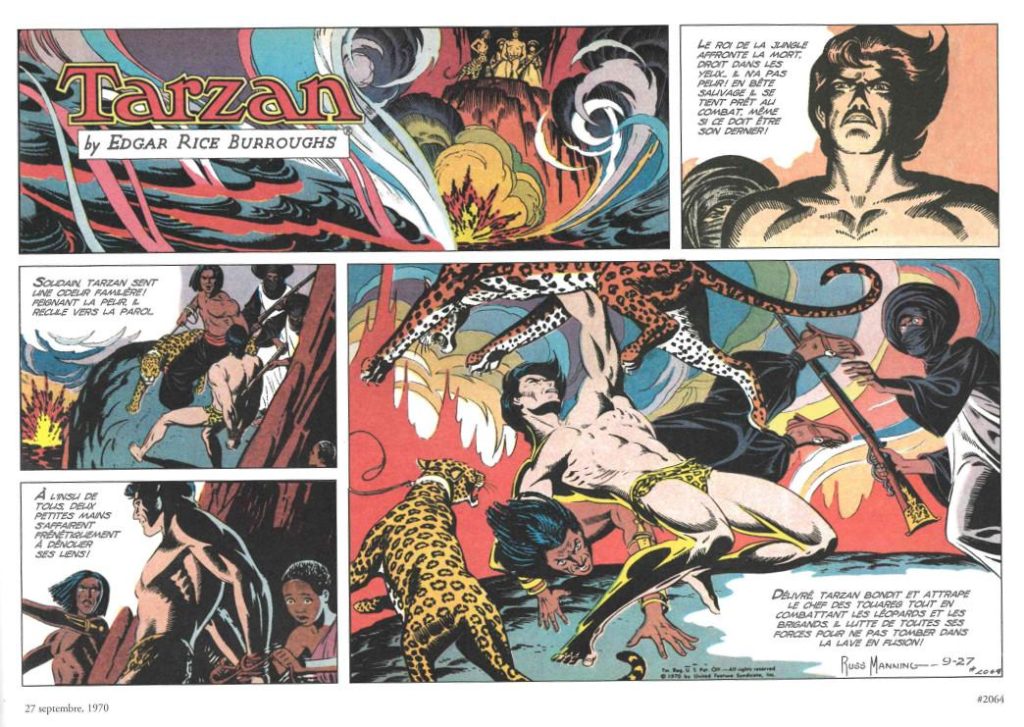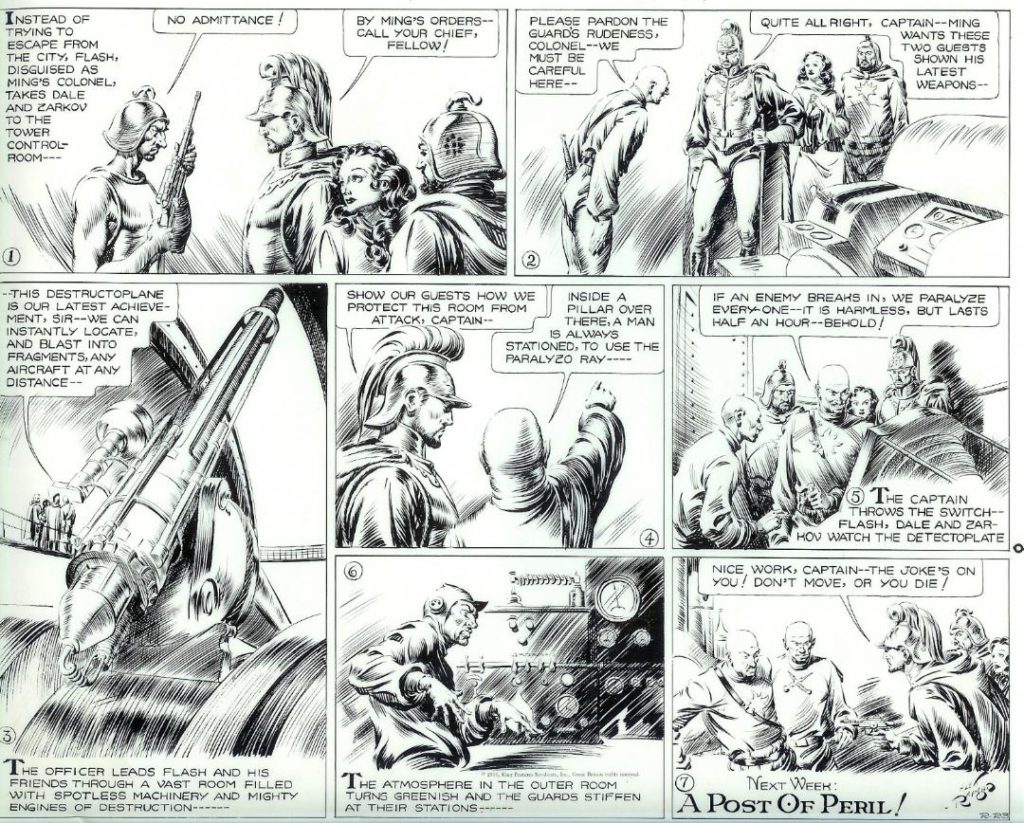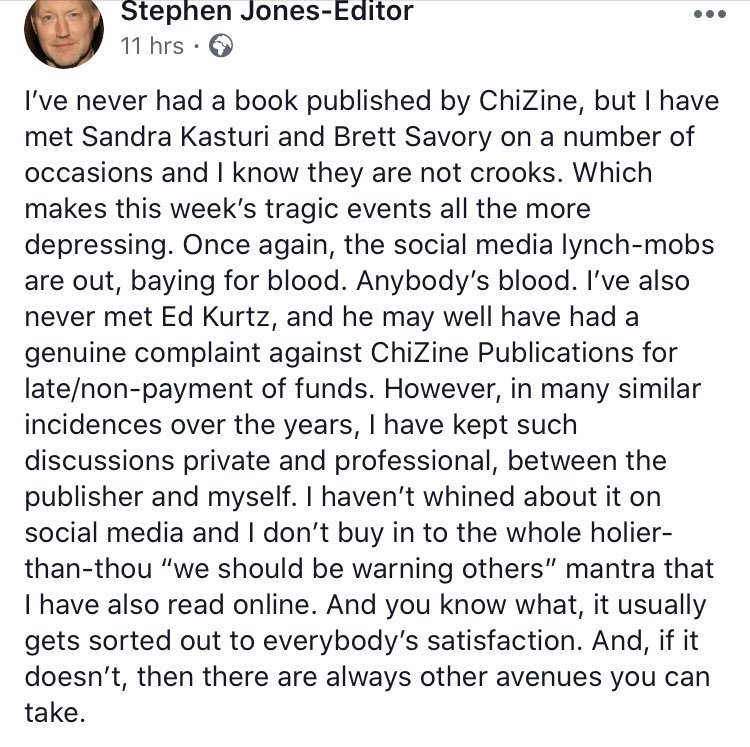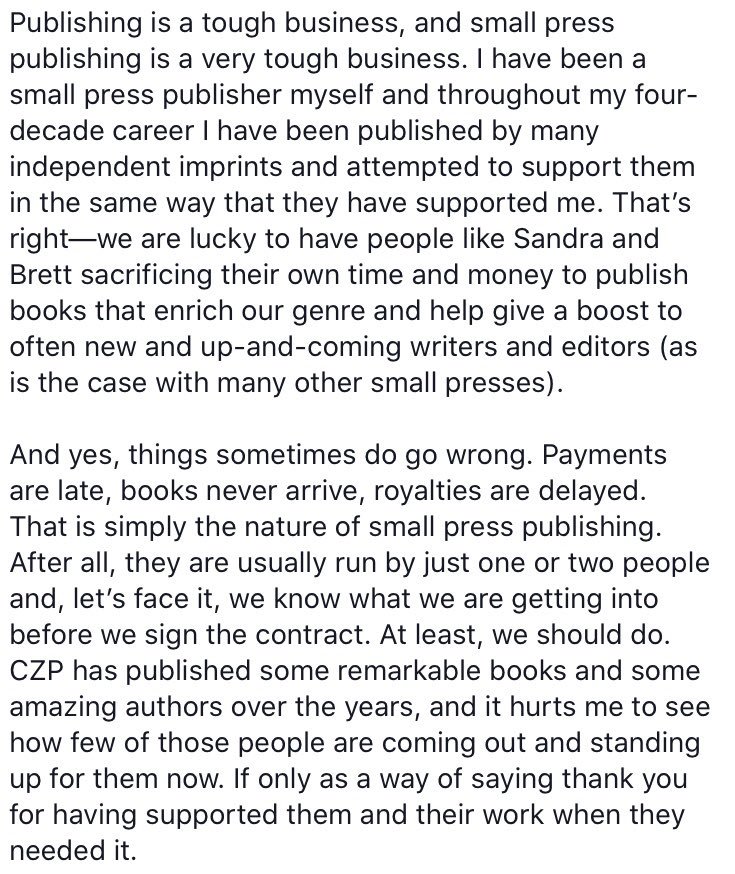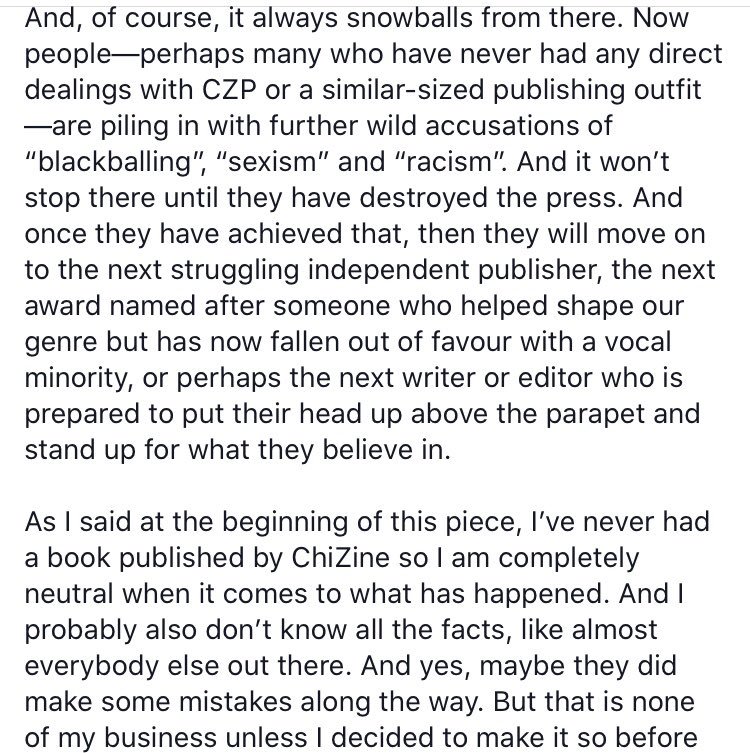(1) UNFAIR USE. Charlie Stross told Bluesky followers that Sam Freedman’s Guardian article linked here yesterday – “The big idea: will sci-fi end up destroying the world?” – is a case of “recycling an article of mine from 2023 without attribution” – “We’re sorry we created the Torment Nexus”.
(2) MAY THE FOURTH BID WITH YOU. “Heritage Auctions Announces ‘Star Wars Day’ Auction” and Animation World Network explains it all to you.

Heritage Auctions has launched the “May 4 Star Wars Day Entertainment Signature Auction,” which will feature over 300 lots ranging from original Star Wars movie posters to screen-used props, high-end replicas, toys, comics, and artwork. The event will conclude with a live session on May 4.
Leading the fleet is the Star Wars Sears Exclusive Set of 12 Carded Figures, the only graded example in existence. Also up for grabs is the Star Wars Sears Exclusive Set of 9 Carded Figures, which includes the highly coveted Boba Fett. These sets, authenticated by industry expert Tom Derby and AFA, are expected to surpass six figures at auction.
“These sets represent a pivotal moment in cinematic history and were among the earliest opportunities fans had to bring the Star Wars universe into their home,” said Justin Caravoulias, Heritage’s Consignment Director of Action Figures and Toys. “Finding them in such incredible condition is exceptionally rare, and the opportunity to win treasures like these on May 4 makes this auction even more special.”
Additionally, the auction features 20 pieces of original artwork from the early days of Lucas Film, including signed Star Wars Droids C-3PO Original Line Art by Alice Carter. John Alvin’s original concept paintings for the unreleased Star Wars Concert Series poster, Greg Hildebrandt’s striking portrait of Darth Vader’s funeral pyre mask, and Olivia De Berardinis’ Grogu painting are also available….
(3) SEEKING AFROSURREALISM. Gautam Bhatia has put out a submissions call for the Strange Horizons – Afrosurrealism Special Issue. Full details at the link.
…Welcome to the Afrosurrealist Special Issue, where the boundaries between the real and the unreal blur, where reality bends, time fractures, and the living and the dead exist side by side. Afrosurrealism has long given shape to our struggles, our power, and our dreams. This special issue seeks to bring those visions to life through stories that cut deep—tales that unsettle, haunt, and liberate….
For this special issue, we are looking for:
- Worlds that slip between the mundane and the uncanny, the ghostly and the futuristic.
- Worlds rich with history and spirit striving to manifest—whether set in the past, present, or futures unknown.
- Tales of hauntings, doppelgängers, liminal spaces, memories, and places that don’t stay put.
- Give us your tales of portals that lead to nowhere, of cities that rearrange themselves overnight, of people becoming someone—or something—else.
- Narratives that challenge traditional structures and defy linear storytelling.
- Works that experiment with or reimagine genres like sword & soul, jujuism, cyberfunk, or Black gothic horror.
- Visions of power, freedom, and transformation shaped by the Black experience where Blackness itself is a force that bends time, space, and destiny.
Send us your myths. Your nightmares. Your dreams wrapped in ancestral magics and spirit.
The editors for the AfroSurrealism Special invite you to submit fiction, poetry, and nonfiction.
We welcome writers who are new and experienced. The submissions call is open to writers of African descent ONLY, whether based in the diaspora or in Africa….
(4) FUNNY BUSINESS. Ira Nayman recommends “Taking Humor Writing Seriously” at the SFWA Blog.
…What makes you laugh? What tries to make you laugh and fails? How do they both work, and why does one succeed where the other doesn’t? As you grow as a comic writer, you’ll start to combine in new ways what you loved in previous works, shaping those devices into something uniquely your own.
Some writers are uncomfortable with this analytical approach. They should embrace it. I once took a course in the Social and Political Aspects of Humor. One of the first things the professor said on the first day of lectures was: “You may be under the impression that analyzing humor will kill it. Most of the students who have taken the course have found that to be untrue.” I couldn’t agree more. If anything, I found my appreciation for well-written humor increased the more I analyzed it.
This analytical approach is especially helpful when it comes to comic dialogue. Record a conversation, then compare how real people speak to how characters in comedies speak. (Spoiler: They’re very different.) In fact, great comic dialogue is like music: Not only does it have a rhythm that can be timed with a metronome, but it usually contains motifs that it repeatedly comes back to. Listen to “Who’s on First?” by Abbott and Costello, “The Argument Clinic” by Monty Python, and “Why a Duck?” by the Marx Brothers. Note, as well, how pauses can be employed as both a comic element in themselves and to allow the audience room to laugh.
Craft can and must be learned. What you do with that craft, the stories you choose to tell, and the way you choose to tell them is the art you have to provide yourself….
(5) WHO HISTORY. Last night’s BBC Radio 4 arts programme Front Row has an item (one third of the show) on Doctor Who, which we linked to in yesterday’s Scroll. But we didn’t mention it also covered the launch of a new non-fiction book on Doctor Who, Exterminate, Regenerate.

On screen, Doctor Who is a story of monsters, imagination and mind-expanding adventure. But the off-screen story is equally extraordinary – a tale of failed monks, war heroes, 1960s polyamory and self-sabotaging broadcasting executives. From the politics of fandom to the inner struggles of the BBC, thousands of people have given part of themselves – and sometimes, too much of themselves – to bring this unlikeliest of folk heroes to life.
This is a story of change, mystery and the importance of imaginary characters in our lives. Able to evolve and adapt more radically than any other fiction, Doctor Who has acted as a mirror to more than six decades of social, technological and cultural change while always remaining a central fixture of the British imagination. In Exterminate / Regenerate, John Higgs invites us into his TARDIS on a journey to discover how ideas emerge and survive despite the odds, why we are so addicted to fiction, and why this wonderful wandering time traveller means so much to so many.
(6) SIMULTANEOUS TIMES. Space Cowboy Books in Joshua Tree, CA has released Simultaneous Times episode 86 with Thomas Broderick & Jenna Hanchey. Simultaneous Times is a monthly science fiction podcast.
Stories featured in this episode:
“A Love Story” by Thomas Broderick. Music by Phog Masheeen. Read by the Jean-Paul Garnier
“A Locked Box, Bound with Chains, Buried Six Feet Deep” by Jenna Hanchey. Music by TSG. Read by the author
Theme music by Dain Luscombe

(7) SHINICHIRO WATANABE Q&A. “The Creator of ‘Cowboy Bebop’ Thinks Reality Is More Dystopian Than Sci-Fi” – interview in the New York Times (behind a paywall).
Shinichiro Watanabe’s first anime, “Cowboy Bebop,” was quite an opening act. A story of space bounty hunters trying to scrape by, its genre mash-up of westerns, science fiction and noir, with a jazzy soundtrack, was a critical and commercial success in Japan and beyond. Its American debut on Adult Swim, in 2001, is now considered a milestone in the popularization of anime in the United States.
Not one to repeat himself, Watanabe followed up “Bebop” with a story about samurai and hip-hop (“Samurai Champloo,” 2004); a coming-of-age story about jazz musicians (“Kids on the Slope,” 2012); a mystery thriller about teenage terrorists (“Terror in Resonance,” 2014); an animated “Blade Runner” sequel (“Blade Runner Black Out 2022,” 2017); and a sci-fi musical show about two girls on Mars (“Carole & Tuesday,” 2019).
Now, he has returned to the kind of sci-fi action that made his name with “Lazarus,” streaming on Max and airing on Adult Swim, with new episodes arriving on Sundays. The show is set in 2055, after the disappearance of a doctor who discovered a miracle drug that has no side effects. Three years later, the doctor resurfaces with an announcement: The drug had a three-year half-life, and everyone who took it will die in 30 days unless someone finds him and the cure he developed….
Unlike your previous sci-fi projects, “Lazarus” takes place not on a distant planet or far into the future, but in our world just 30 years from now. Why was that important?
In the past, I would look at other works of fiction and get inspired by them. But this time, just watching the news and taking a look at the world, things happening right now seem more dramatic and kind of crazier than fiction. Because I was inspired by events going on in the real world, putting it too far into the future would lose that touch of reality….
The anime starts with a doomsday clock saying there are 30 days until most of humanity dies, and yet we see businesses going on like normal, talk shows interviewing artists, and more. Why did you contrast the urgency of the story with scenes like these?
That was inspired by reality and experiencing the Covid pandemic. Not everyone was acting the same way. There were people who didn’t believe in it, and there were people who didn’t wear masks. I thought the anime would be more grounded in reality if I made it so we had different reactions from the characters….
(8) MEMORY LANE.
[Written by Cat Eldridge.]
Small Change trilogy



Doing alternate history right is always hard work, but Jo Walton’s the Small Change books consisting of Farthing, Ha’penny and Half a Crown get it perfectly spot on. They’re set in a Britain that settled for an uneasy peace with Hitler’s Germany, and they are mysteries, one of my favorite genres. And these are among my all-time favorite mysteries of this niche which includes Len Deighton’s SS-GB. and C. J. Sansom’s Dominion.
I am not going to discuss these novels in any way what so ever. Not going to do it. It’s really going to spoil it for any of you’ll who decide to read them which you really should. I can reveal that the first is a classic British manor house murder mystery complete with the proper centuries old family. Really well-crafted manor house mystery.
The audiobooks are fascinating, there being shifting narrators with Peter Carmichael whose presence is to be found in all three novels is voiced by John Keating, and Bianco Amato voicing David Kahn’s wife in Farthing, but Viola Lark being played by Heather O’Neil in Ha’penny and yet a third female narrator, Elvira, is brought to life by Terry Donnelly in Half a Crown.
Now I’m fascinated by what awards they won (and didn’t) and what they got nominated for. It would win but one award, the Prometheus Award for Best Libertarian SF Novel for Ha’Penny which is I find a bit odd indeed given there’s nothing libertarian about that novel.
Now Half a Crown wracked an impressive number of nominations: the Sidewise Award for Best Long Form Alternate History, Locus for Best SF Novel, Sunburst award for a Canadian novel, and this time deservedly so given the themes of the final novel a Prometheus Award for Best Libertarian SF Novel.
Farthing had picked up nominations for a Sidewise, a Nebula, Campbell Memorial, Quill whereas Ha’Penny only picked a Sidewise and Lambda.
Not a single Hugo nomination which really, really surprised me.
There is one short story set in this series, “Escape to Other Worlds with Science Fiction” which you can read in her Starlings collection that Tachyon published. It is in a fantastic collection of her stories, poems and cool stuff!
(9) COMICS SECTION.
- Dinosaur Comics considers time travel and what writers really want.
- Ink Pen names super doctors.
- Reality Check wants its crisis properly labeled.
- Rhymes with Orange lets a suitor down easy.
- xkcd ruins poetry with science.
(10) WE’LL MEET AGAIN, DON’T KNOW WHERE, DON’T KNOW WHEN. “‘Big Bang’ Universe Collides As Simon Helberg & Raegan Revord Join Melissa Rauch On NBC’s ‘Night Court’” at Deadline.
NBC‘s Night Court has set up a colliding of the “Big Bang” Universe as Simon Helberg (Big Bang Theory, Poker Face) and Raegan Revord (Young Sheldon) are set to guest star in the Season 3 finale airing May 6 at 8:30 p.m. ET/PT.
Night Court star and executive producer Melissa Rauch played Helberg’s wife on the CBS smash The Big Bang Theory, created by Chuck Lorre and Bill Prady. Although who Helberg will play in the season finale is under wraps, his character is set for a game-changing cameo that could really shake things up for Abby (Rauch).
Revord will play Shelby, a teenage runaway inclined to marry her soulmate, in an homage to the Michael J. Fox episode from the original series.
Fox appeared in the second episode of the original series titled “Santa Goes Downtown,” which aired on January 11, 1984, in the role of Eddie Simms. Eddie and his girlfriend Mary (Olivia Barash) are runaway teens determined to get married, who end up in night court on shoplifting charges. The pair meet a mysterious man who claims he’s Santa Claus, or at least that’s who he claims to be, altering their lives forever. When Fox shot the guest appearance, he was a series regular on the NBC sitcom Family Ties, a few years before he would break out as Marty McFly in Back to the Future.
Additionally, Marsha Warfield will return in her iconic role as Roz from the original series. Other guest stars include Michael Urie and Ryan Hansen….
(11) UP ABOVE THE WORLD SO HIGH. [Item by Mark Roth-Whitworth.] Turning space from vacuum to vapidity, by one of my favorite columnists. “What’s more vacuous than an endless vacuum? It’s Lauren Sánchez and Katy Perry’s party in space” by Marina Hyde in the Guardian.
… In truth, how the women looked had been an overwhelming part of the buildup, and by their own design. In an Elle magazine joint interview with the passengers, Lauren showed off the hot space suits she’d personally commissioned, inquiring rhetorically: “Who would not get glam before the flight?” “Space is going to finally be glam,” agreed Perry. “Let me tell you something. If I could take glam up with me, I would do that. We are going to put the ‘ass’ in astronaut.” A former Nasa rocket scientist said: “I also wanted to test out my hair and make sure that it was OK. So I skydived in Dubai with similar hair to make sure I would be good – took it for a dry run.” Still want more? Because there was SO much of it. “We’re going to have lash extensions flying in the capsule!” explained Lauren. “I think it’s so important for people to see us like that,” explained a civil rights activist. “This dichotomy of engineer and scientist, and then beauty and fashion. We contain multitudes. Women are multitudes. I’m going to be wearing lipstick.”
Ooof. I always thought space travel was futuristic, but this was the first time it came off as travelling back in time, in this case using their little capsule to take us back to the most ludicrous inanities of 2010s girlboss feminism….
(12) SPLISH-SPLASH. The New York Times meets “The Techno-Utopians Who Want to Colonize the Sea”. (Article behind a paywall.)
…His 304-square-foot habitat was inside the underwater buoyancy chamber that helps stabilize a floating home called SeaPod Alpha Deep. An armed security guard was in the above-water part of the structure, monitoring Koch and ensuring that the pod did not have “any visitors that we don’t want.” When my boat arrived, he threw down a cable and winched me up. Then I made my way down a 63-step spiral staircase to the circular lower chamber — a dizzying process, as the SeaPod rocked in the loudly sloshing sea. I was greeted by a beaming Koch, a bald 59-year-old German engineer with a whitened beard and a Buddha belly.
He gave me a tour, pointing to a school of sardines outside a porthole. The quarters came equipped with a bed, an exercise bike, Starlink internet and a dry toilet. A digital clock on the wall was counting down toward his 120-day goal. (The previous record was 100 days, set in 2023 by Joseph Dituri at Jules’ Undersea Lodge, off the coast of Key Largo, Fla.) “I’ve enjoyed the time, actually,” Koch said in his heavy German accent, his face greenish-blue from the light pouring in. “This is what people get completely wrong. They think that I feel like a prisoner, and I’m putting marks on the wall. My food is excellent, my booze is excellent.” A person came by to clean daily.
Koch arrived here, in small part, via a San Francisco-based nonprofit called the Seasteading Institute, which promotes “living on environmentally restorative floating islands with some degree of political autonomy.” The vision, as the Institute’s president, the “seavangelist” Joe Quirk, once told Guernica, is “startup societies where people could form whatever kind of community they wanted” — a libertarian-inflected world where, it is said, you could “vote with your boat,” relocating to a community in line with your views….
[Thanks to Cat Eldridge, SF Concatenation’s Jonathan Cowie, Mark Roth-Whitworth, Steven French, Kathy Sullivan, Teddy Harvia, Mike Kennedy, Andrew Porter, John King Tarpinian, and Chris Barkley for some of these stories. Title credit belongs to File 770 contributing editor of the day Daniel Dern.]






